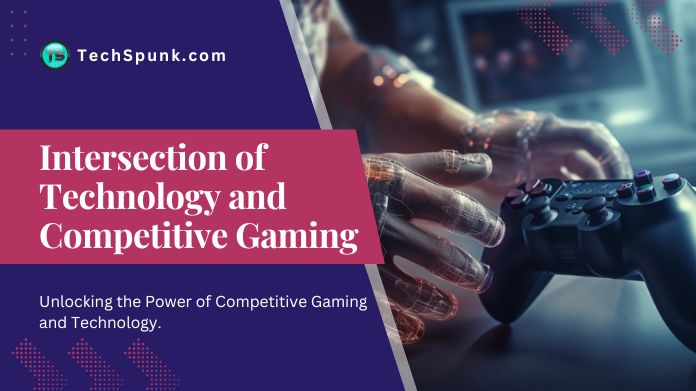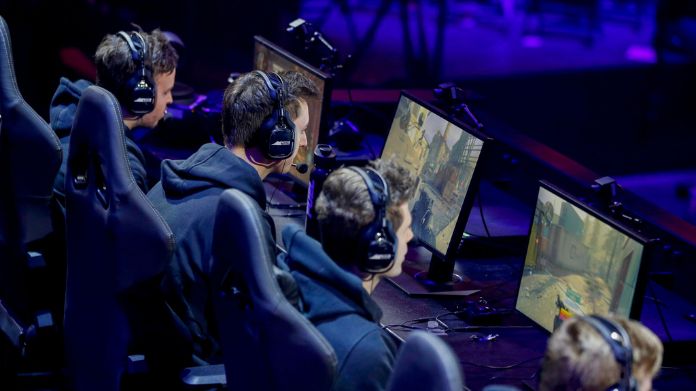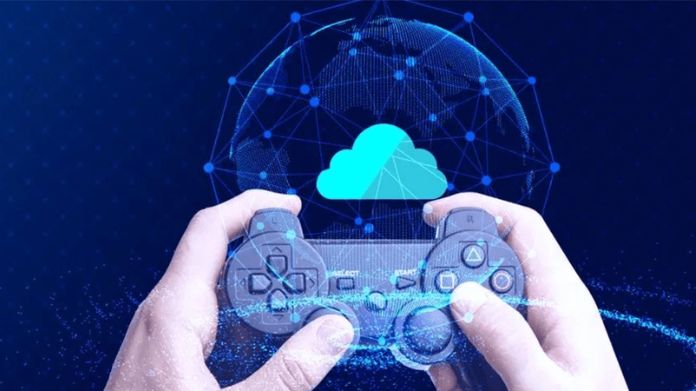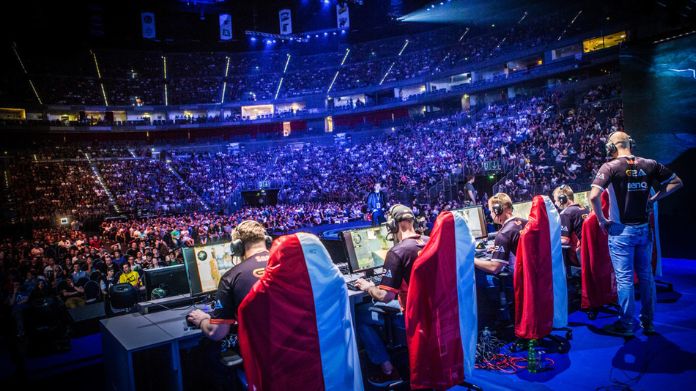The emergence of the digital age has revolutionized various sectors, not the world of competitive gaming or esports.
A new wave of growth and transformation is in motion at the crossroads of technology and esports.
This landscape presents a fascinating fusion of advanced software, AI systems, VR technologies, and more, each working in concert to elevate the gaming experience.
So let’s get started!!
Table of Contents
Competitive Gaming and Technology Advancements
 The advent of advanced technologies has greatly enriched the realm of competitive gaming.
The advent of advanced technologies has greatly enriched the realm of competitive gaming.
Cutting-edge software and hardware, alongside the proliferation of high-speed internet, have facilitated an immersive and seamless gaming environment.
1. High-speed Internet and Gaming
 High-speed internet has undoubtedly acted as the catalyst for the esports revolution. The digital ecosystem thrives on connectivity, and enhanced internet speeds have made real-time competitive gaming a reality.
High-speed internet has undoubtedly acted as the catalyst for the esports revolution. The digital ecosystem thrives on connectivity, and enhanced internet speeds have made real-time competitive gaming a reality.
The faster the internet, the smoother the gaming experience, reducing latency issues that could hinder players’ performance.
Moreover, high-speed internet enables streaming capabilities, a key element in the rise of esports.
Platforms like Twitch and YouTube Gaming provide gamers with a global stage to showcase their skills and interact with fans.
This connectivity has also fostered community among gamers worldwide, enhancing the overall esports experience.
2. AI and Machine Learning
 Artificial intelligence (AI) and machine learning (ML) have permeated esports, with potential implications ranging from game development to player training.
Artificial intelligence (AI) and machine learning (ML) have permeated esports, with potential implications ranging from game development to player training.
Game developers use these technologies to create smarter, more adaptable non-player characters (NPCs), enhancing the complexity and challenge of games.
In the training arena, AI is used for analytical purposes, helping players improve their strategies by studying game patterns, opponent tactics, and more.
Advanced algorithms can scrutinize large volumes of game data, providing players with insights that human coaches might miss.
3. Virtual Reality
 Virtual reality (VR) represents another significant leap for esports. This trending technology immerses players in a three-dimensional environment, providing unprecedented realism.
Virtual reality (VR) represents another significant leap for esports. This trending technology immerses players in a three-dimensional environment, providing unprecedented realism.
Players can experience the game firsthand as if they were physically present in the competitive gaming world. In the context of esports, VR could revolutionize the spectator experience.
Fans could virtually ‘sit’ in the stadium and watch their favorite players compete, bridging the gap between the digital and physical worlds.
Esports and the Business Ecosystem
 The intersection of esports and technology extends beyond the gameplay, permeating the industry’s business side as well.
The intersection of esports and technology extends beyond the gameplay, permeating the industry’s business side as well.
As the esports industry expands, the financial stakes rise, leading to the incorporation of technologies such as blockchain and advanced data analytics.
1. Blockchain Technology
 Blockchain technology promises to add a layer of transparency and security to esports transactions.
Blockchain technology promises to add a layer of transparency and security to esports transactions.
This decentralized ledger can mitigate the risk of fraudulent activities, making the trading of virtual goods more secure.
Beyond security, blockchain can also facilitate the creation of decentralized gaming platforms, enabling players to compete in a fair and transparent environment.
Such innovations could empower gamers, allowing them to reap greater rewards from their skills and dedication.
2. Data Analytics
 Data analytics plays an essential role in the business side of esports. It assists companies in understanding player behavior, gaming trends, and market opportunities.
Data analytics plays an essential role in the business side of esports. It assists companies in understanding player behavior, gaming trends, and market opportunities.
For instance, through data analytics, sponsors can determine which games or players have the most significant draw and adjust their marketing strategies accordingly.
Also, analytics aids in the regulation of esports wagering. Algorithms can spot unusual betting patterns, helping maintain esports contests’ integrity.
Esports and Cloud Gaming
 Cloud gaming has been a game-changer in the esports industry, allowing players to access games from any device connected to the internet.
Cloud gaming has been a game-changer in the esports industry, allowing players to access games from any device connected to the internet.
It eliminates the need for powerful hardware, opening esports to a broader demographic.
1. Streaming and Accessibility
Cloud gaming operates on a streaming model, similar to Netflix for video or Spotify for music. Games run on powerful servers in data centers, and the video feed is streamed to the player’s device.
This means that a basic monitor or smartphone player can run games normally, requiring high-end hardware.
2. Global Inclusivity
With the barrier of high-cost hardware removed, more players can participate in esports from different economic backgrounds and regions worldwide.
This democratization of access is particularly significant for competitive gaming, where player inclusivity can enhance competition and fan engagement.
3. Potential Challenges
Cloud gaming has challenges. High-speed, low-latency internet is a must, which can limit its reach in regions with poorer connectivity.
Moreover, the quality of game streaming can be affected by network congestion or server issues. Nevertheless, the potential of cloud gaming to transform esports is undeniable.
Esports Training and Player Health
 Professional esports players train for hours daily, affecting their physical and mental health.
Professional esports players train for hours daily, affecting their physical and mental health.
Technologies are being developed to help players prepare more effectively and manage their health better.
1. Training Technologies
High-tech training platforms are becoming more common in esports. These tools can analyze a player’s performance in-depth, offering tailored feedback to help improve their skills.
Some media also use AI and ML to provide personalized training regimes, catering to the player’s individual needs.
2. Health Monitoring
Esports athletes are at risk of health issues like repetitive strain injuries or eye strain. New technologies are emerging to monitor players’ health and offer preventative measures.
Wearable tech can track posture, eye movement, and other factors, providing insights into potential health risks.
3. Mental Health
Esports can be mentally demanding, with players facing intense pressure to perform. Technology can offer solutions here, too, with apps and platforms providing mental health support.
AI chatbots, for instance, can offer immediate emotional support, while VR can provide relaxation and stress-relief experiences.
Fan Engagement in Esports
 The relationship between fans and esports is critical to the industry’s success. Technology is key in enhancing fan engagement, making esports a more immersive and interactive experience.
The relationship between fans and esports is critical to the industry’s success. Technology is key in enhancing fan engagement, making esports a more immersive and interactive experience.
1. Interactive Viewing
Interactive viewing technologies allow fans to engage with the action in real-time. Platforms like Twitch offer features like live chats, enabling viewers to interact with each other and the streamer.
Interactive replays, where viewers can control the camera angle and playback speed, also add to the immersive experience.
2. Virtual Merchandise and Collectibles
Virtual merchandise and digital collectibles, often powered by blockchain technology, offer new ways for fans to support their favorite teams and players.
Fans can purchase virtual jerseys, in-game items, or digital collectibles tied to memorable esports moments. This not only generates revenue for the industry but also deepens fan engagement.
Esports and Social Media
 Social media platforms are indispensable tools for esports, offering players, fans, and organizations a space to interact and engage.
Social media platforms are indispensable tools for esports, offering players, fans, and organizations a space to interact and engage.
1. Community Building
Esports athletes, teams, and even online casinos use social media to connect with their fans.
Not only do players share updates, stream practice sessions, and offer behind-the-scenes insights, but online casinos also showcase their latest offerings, including popular online roulette games or new slot games.
These platforms allow fans to comment, share, and engage with the content, fostering a sense of community around the game or player.
2. Marketing and Sponsorships
For brands and sponsors, social media offers a platform to reach esports’ primarily young, digital-savvy audience.
Sponsored posts, branded content, and influencer collaborations are common marketing strategies in esports.
3. Player Scouting
Social media also plays a role in player scouting. Upcoming players can share their skills and achievements on platforms like Twitter or Reddit, attracting the attention of esports organizations. Thus, social media can serve as a launching pad for aspiring esports athletes.
Final Thoughts
The intersection of technology and esports is a vibrant, rapidly evolving nexus. Advanced software, AI, VR, cloud gaming, health monitoring tools, fan engagement technologies, and social media platforms contribute to this dynamic ecosystem.
Together, they are shaping an immersive, inclusive, and engaging landscape for players and fans.
As we progress, the synergistic relationship between technology and competitive gaming promises to unlock untapped potential and unprecedented possibilities.





